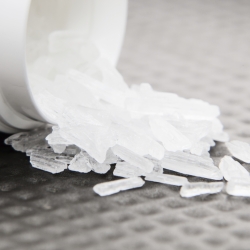Australians are completely in the dark when it comes to the scale of ice use in the country, according to a recent survey by NCPIC, writes Professor Jan Copeland in the Newcastle Herald.
Australians are completely in the dark when it comes to the scale of ice use in the country, according to a recent survey by our centre.
The online survey of more than 11,000 people – the largest of its kind in Australia – found almost half the survey respondents believe between 30per cent and 100per cent of Australians have tried ice in their lifetime. This is despite reports from the Australian Drug Strategy Household Survey that indicates lifetime use of methamphetamine is closer to 7per cent of Australians, with ice use specifically making up about half of this.
A further 36per cent of respondents indicated they believe 10-30per cent of Australians had tried the drug, and only 14per cent answered correctly. Even among those who had never used ice only 23per cent believed it was less than 10per cent.
While there is no doubt ice is an extremely dangerous and damaging substance, and use has definitely increased in Australia in recent years as a percentage of amphetamine users and among young males, this misconception is interesting and disturbing.
Survey respondents, in general, felt prevalence of use was much higher than it actually is, with a fifth thinking more than half of their fellow Australians have tried ice at least once in their lifetime. That’s an enormous portion of the population who are assumed to have tried a highly addictive and potentially deadly substance.
The most worrying aspect of this is that it normalises ice use in the minds of those who may be thinking of trying it.
The survey asked respondents whether they had ever tried ice, would consider trying it in the future, or had tried or used it already. While this sort of survey can’t comment on population prevalence of use, it did provide us some valuable insights into the mindsets of those people who have tried the drug, and perhaps of more concern, those who now clearly know the dangers of ice but are thinking of trying it anyway.
Asking respondents to rate their perceptions of how dangerous they believe ice to be for a user, how dangerous they believe users are to others, and how addictive the drug is, the survey revealed Australians view ice differently based on their desire to try it.
The differences in perception of dangers and addictiveness of ice were most interesting.
Understandably, those who won’t try ice thought it highly dangerous to health, that users were dangerous to those around them, and that the drug was extremely addictive. Interestingly though, it was the potential future users who were at the opposite end of the scale, feeling ice was less dangerous to health, users less dangerous to others and the drug less addictive, compared even to those who had actually used ice.
This result points to a subset of society who are clearly aware of short-term and long-term side effects of ice, who are subject to regular media portrayals of its harms, but believe it to be less dangerous and addictive than it really is – at least for them.
Australia has one of the highest rates of methamphetamine use in the world, and following wide-ranging community consultation there is now a need to move to targeted education and awareness, in order to lessen the gap between perceptions and the reality of ice.
In addition to perceptions of harms, the survey also explored the demographics of self-identified ice users. It found their profiles may not match stereotypical perceptions of drug users, with over half identifying as middle-to-high income earners, and also a group of stay-at-home mums who use ice at more risky levels and for different reasons – such as to escape reality and deal with difficult thoughts and feelings – than the rest of the sample.
Ongoing research into perceptions of drugs and drug users is a crucial part of preventing uptake.
It’s really important that prevention-based education and awareness campaigns use research like this to gain a better understanding of the ways ice and ice users are viewed. Exploring the gaps between public perception and the realities of use can help create a constructive national conversation about the issue, and guide future attempts to reduce uptake, use and manage addiction.
To read more about the findings of NCPIC’s recent survey, visit ncpic.org.au.
This article was originally published in the Newcastle Herald.


